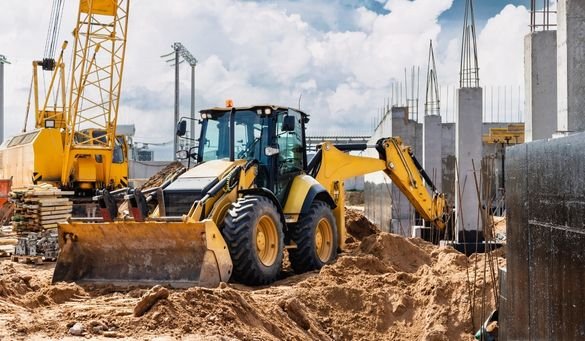Construction Equipment Rentals: Sturdy Equipment for Your Projects
Construction Equipment Rentals: Sturdy Equipment for Your Projects
Blog Article
Maximize Your Spending Plan by Recognizing the Expenses Connected With Construction Tools Services
Understanding the complete extent of prices connected with building equipment leasings is vital for optimizing your budget plan. What strategies can be utilized to successfully take care of these expenses and make certain an extra effective rental experience?
Summary of Rental Expenses
When taking into consideration building devices services, recognizing the linked prices is critical for effective budgeting and task preparation. Rental prices can vary considerably based on several variables, including devices kind, duration of service, and area. The initial rental fee usually shows the devices's market demand and its connected functional abilities, influencing the total expense.
Along with the base rental rate, ancillary expenses might arise, such as transportation costs, gas surcharges, and maintenance costs. It is vital to make up these additional costs to precisely evaluate the complete expense of renting tools. The rental duration can influence prices; longer services may certify for discounted prices, while short-term services might incur higher day-to-day charges.

Break Down of Rental Prices
A detailed understanding of rental prices is important for professionals and project supervisors intending to optimize their budgets. Rental prices for building and construction equipment commonly are composed of several parts, consisting of base rates, time-based fees, and usage costs.
Base rates are the core fees related to the leasing of the equipment, typically figured out by the type and dimension of the machinery. These rates can vary considerably, affected by variables such as equipment demand, schedule, and local market trends. Time-based costs, which may be daily, weekly, or monthly, serve to fit different job timelines and rental periods.
In addition, rental prices may include usage costs, which are appropriate when equipment is made use of past a specified limit, making sure that the rental company can represent damage. Seasonal demand variations can also affect rental rates, with peak construction seasons generally commanding higher costs.
In addition, understanding the rental business's plans concerning upkeep and insurance can give further insight right into the overall expense framework. By analyzing these elements, professionals can make informed decisions, ensuring the choice of rental tools straightens with both task needs and spending plan restraints.
Extra Costs to Consider
Understanding the complexities of additional charges is important for service providers to handle their total leasing expenses efficiently. Beyond the typical rental prices, various extra costs can significantly influence the overall cost of tools leasing. These costs commonly consist of shipment and pickup fees, which can differ based upon range and logistics involved in transferring the equipment to and from the job site.
Furthermore, some rental business might impose gas additional charges if the devices is returned with less gas than when leased. It is additionally necessary to understand possible cleaning fees, specifically for specific tools that calls for extensive upkeep after usage.

Thoroughly examining the rental agreement and making clear these added charges upfront can hoisting equipment in construction assist contractors stay clear of unforeseen expenses and ensure that budgets continue to be intact throughout the task lifecycle.
Repair And Maintenance Costs
Routine repair and maintenance expenditures are typically ignored aspects that can considerably affect the general expense of building and construction equipment services. When renting tools, it is vital to consider not only the rental charges however additionally the prospective expenses connected with maintaining the equipment in optimal operating condition.
Lots of rental companies include fundamental upkeep as part of the rental contract; nonetheless, extra substantial repair services or unexpected break downs can lead to added expenses. It's important to evaluate the rental agreement carefully to recognize what maintenance solutions are covered and what obligations drop on the occupant.
Additionally, equipment that is not well-kept can result in inadequacies on duty website, potentially creating delays and enhancing job costs. To reduce these dangers, it is suggested to perform routine inspections and construction tractors keep open communication with the rental copyright pertaining to any concerns that emerge during usage.
Insurance and Obligation Prices
Insurance and obligation expenses are important elements that can significantly influence the total expense of construction equipment services (construction equipment rentals). These costs make certain that both the rental business and the client are shielded from possible economic losses occurring from mishaps, damages, or burglary during the rental duration

Furthermore, clients must recognize any kind of deductibles or exclusions in the insurance plan, as these can affect potential out-of-pocket expenses. Recognizing the terms of any insurance policy protection is vital to prevent unexpected prices. Eventually, budgeting for insurance policy and responsibility expenditures can help make sure a smoother rental experience and safeguard against financial risks connected with construction jobs.
Verdict
In final thought, a thorough understanding of the prices connected with building and construction tools services is vital for efficient budget plan management. By examining rental rates, added fees, upkeep expenditures, and insurance organizations, people and needs can decrease unforeseen expenditures. This strategic strategy not just boosts cost-effectiveness yet additionally makes sure that tasks advance efficiently and efficiently. Inevitably, notified decision-making regarding devices rentals adds to the general success of building and construction endeavors.
Rental costs can differ substantially based on a number of variables, consisting of equipment type, period of leasing, and location (aerial lift rental). The rental period can influence prices; longer leasings might qualify for affordable prices, while short-term services may incur higher day-to-day charges
By conducting detailed research and involving with trusted rental companies, service providers can properly navigate the complexities of rental rates, inevitably optimizing their economic sources.
Past the common rental rates, different supplementary fees can substantially impact the total price of tools service. Rental companies usually offer obligation insurance coverage that covers injuries to third celebrations or damages to building, while tools damages insurance can cover the expense of fixings or replacement if the rented equipment is harmed.
Report this page